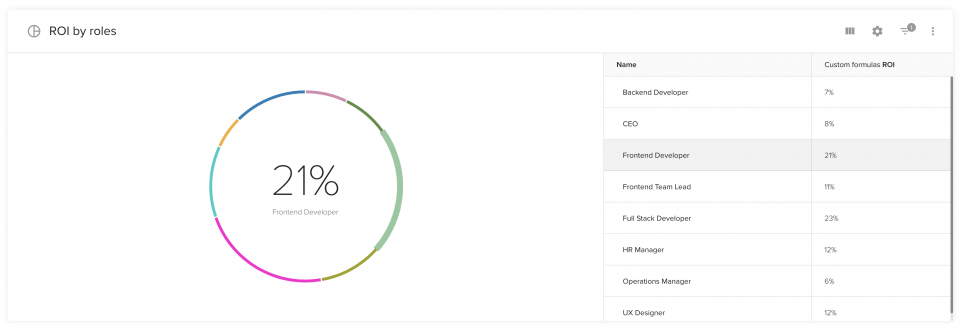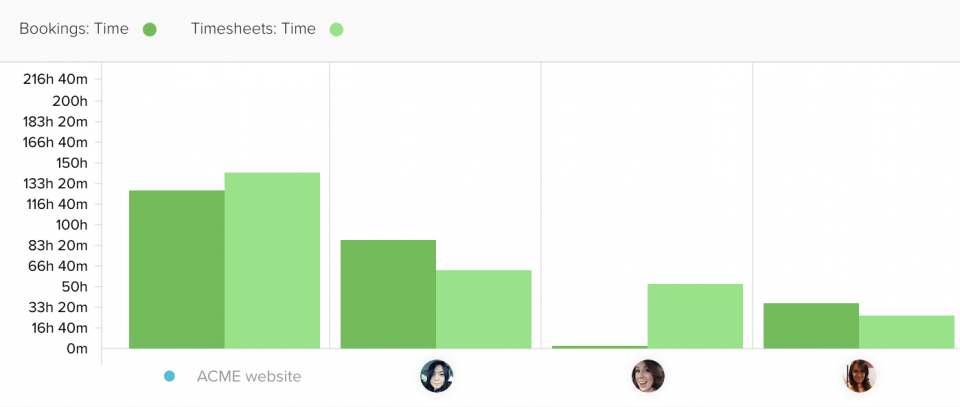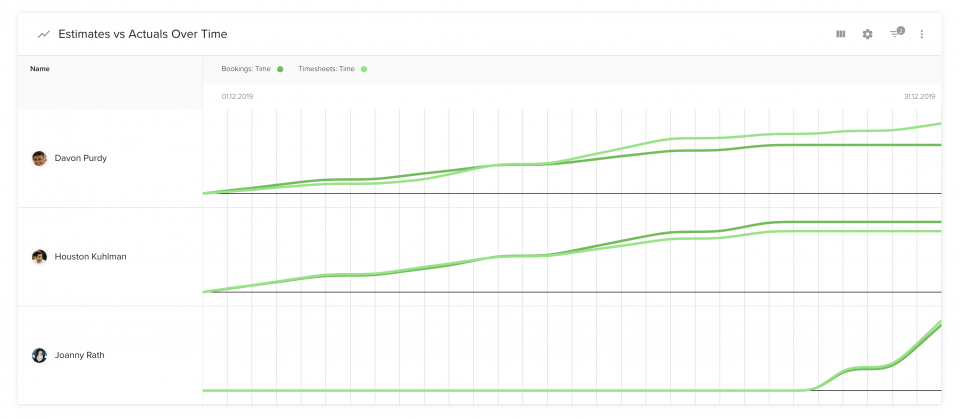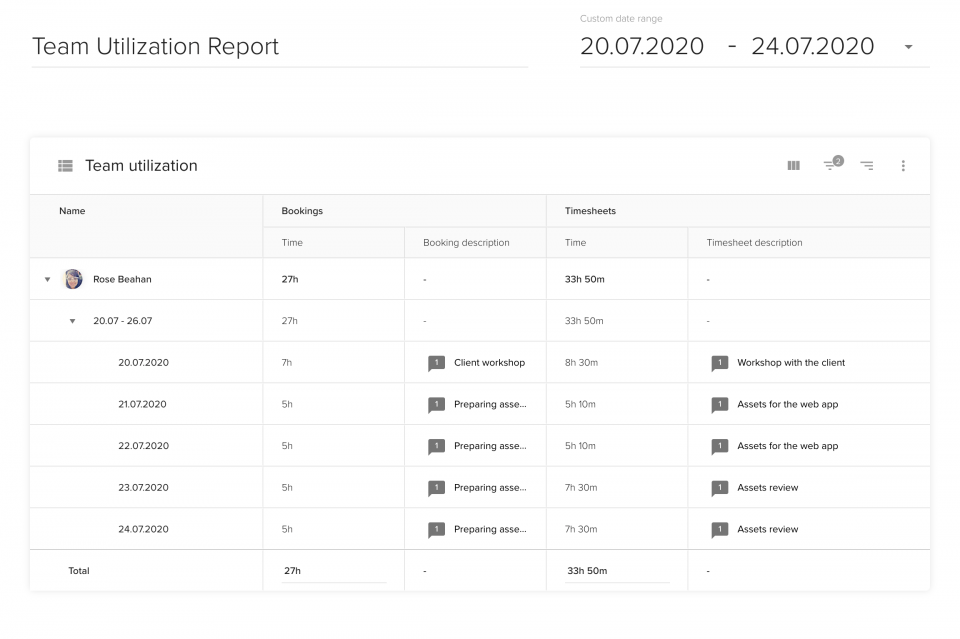Casa " Blog " Valutare le prestazioni del team con la soluzione di pianificazione delle risorse
Che siate un project manager o un amministratore delegato di un'azienda, è molto probabile che vogliate sapere come sta andando il vostro team. In qualità di leader del team, avete la responsabilità di stabilire la direzione e di esprimere le aspettative, quindi, naturalmente, volete sapere se i vostri dipendenti le stanno rispettando.
Certo, è sempre possibile valutare le prestazioni del team sulla base di alcune pietre miliari o risultati. Ad esempio, se stiamo parlando di un team di progetto, si potrebbe sostenere che la sua efficacia può essere misurata in base al successo del progetto.
Purtroppo, una valutazione di questo tipo presenta alcuni difetti significativi. Innanzitutto, potrebbe essere fuorviante. I progetti falliscono per molteplici ragioniNon si può dire molto in base al risultato in sé: è necessario scavare più a fondo. Inoltre, quando valutate il vostro team solo al termine di un determinato progetto, perdete l'occasione di ottimizzare e migliorare il loro lavoro. Per questo motivo, in questo blog post vi mostreremo come monitorare regolarmente le prestazioni del team e identificare le opportunità di miglioramento.
Come gestiscono i project manager le risorse del progetto e la valutazione delle prestazioni del team?
Tutti i rapporti illustrati in questo articolo possono essere facilmente configurati in Teamdeck. È una soluzione per la gestione delle risorse utilizzata da decine di agenzie, consulenti o società di sviluppo software (alcune di esse utilizzano Teamdeck.io come app per la gestione del tempo, altre come strumento di pianificazione delle risorse). Questa applicazione consente di assegnare i dipendenti a diversi progetti, di tenere traccia del loro tempo e di gestire la loro disponibilità. Una robusta suite di reportistica è una delle caratteristiche più importanti di Teamdeck: consente ai team leader di comprendere meglio come lavorano i loro team e quanto sono efficaci. Sulla base di questi report, PM e manager possono prendere decisioni migliori supportate dai dati.

Come valutare le prestazioni del team con Teamdeck per ottenere il proprio dream team?
Potete utilizzare i report di Teamdeck per valutare diversi aspetti dell'efficacia del vostro team. Continuate a leggere per ottenere istruzioni passo-passo su come creare ciascuno dei report sulle prestazioni del team presentati di seguito. Potete anche programmare una telefonata con uno dei nostri esperti di gestione delle risorse: insieme costruiremo un cruscotto di reportistica perfetto per misurare l'efficacia del vostro team.
Calcolo del tasso di produttività dei dipendenti - il punto di partenza per un'efficiente valutazione delle prestazioni del team
La produttività dei dipendenti è un'ottima metrica per misurare quanto denaro i vostri dipendenti portano all'azienda. Il monitoraggio è utile anche se uno degli obiettivi aziendali è quello di calcolare i progetti/clienti più redditizi, un'esigenza comune per le agenzie o le società di consulenza. Apriamo un report in cui è già stata impostata la metrica Produttività dei dipendenti.
Teamdeck offre un paio di modelli di rapporto. Uno di questi, chiamato KPIè particolarmente utile per la creazione di rapporti sulle prestazioni dei team. Accedere al proprio account, andare su Rapporti e crearne uno nuovo usando questo modello.
Si vedrà una tabella chiamata KPI di vendita. Qui è possibile tenere traccia di un paio di metriche chiave delle prestazioni:
- Produttività - quanto denaro è stato guadagnato dai vostri dipendenti (calcolato in base alle tariffe dei vostri clienti)
- Tasso di produttività dei dipendenti - soldi guadagnati per dipendente
- Costo dei dipendenti - il costo dei vostri dipendenti (calcolato in base alle loro tariffe)
- ROI (Return on Investment) - il profitto ottenuto dai vostri dipendenti.
Le formule per queste metriche sono già state predefinite in Teamdeck, ma è possibile modificarle facendo clic su Metriche e selezionare la formula che si desidera modificare.
Quando si genera questo report per la prima volta, si noterà che è vuoto. Questo perché è necessario popolare il campo Tasso interno e Tasso esterno colonne, prima di tutto. Queste colonne funzionano come le celle di Excel: basta digitare il valore corretto. La tariffa interna è la cifra che il dipendente guadagna per ogni ora di lavoro. La tariffa esterna è quanto si fa pagare ai clienti per un'ora di lavoro.
È possibile definire una tariffa per l'intero team o espandere la tabella e assegnare le proprie tariffe a tutti i membri dell'azienda. Man mano che si compilano le celle, il resto della tabella si aggiorna automaticamente. Conoscendo le tariffe del team, Teamdeck può calcolare il resto in base ai fogli di presenza delle persone.













